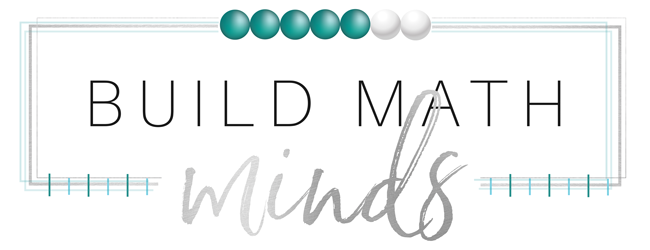Join the Build Math Minds PD site
Welcome fellow Recovering Traditionalists to Episode 182 – Visual Patterns: The Secret Weapon for Teaching The Math Practices
Have you ever wished for a single activity that could transform how your students think about mathematics? Today, we’re diving into just such a tool.
In the last few episodes we’ve been talking about something fundamental in mathematics education: helping students truly see the structure behind numbers and relationships. Visual Patterns by Fawn Nguyen are another of my favorite math activities that directly support Standards of Mathematical Practice: Standard #7 – Look for and Make Use of Structure, however they also help students engage in all the Math Practices.
So, what exactly are Visual Patterns? Imagine a sequence of images where each subsequent image builds upon the previous one in a predictable, yet engaging way. These aren’t just pretty pictures – they’re mathematical puzzles waiting to be solved. You can access them all for free at VisualPatterns.org.
Here’s why Visual Patterns are a game-changer for elementary mathematics:
- Intuitive Problem Solving: Instead of abstract numbers, students are presented with visual sequences that invite curiosity. A pattern might start with three squares, then grow to six squares, then nine – challenging students to predict the next iteration. This isn’t just counting; it’s reasoning.
- Concrete Representation of Abstract Concepts: Visual Patterns transform a very complex math concept into something tangible. When students can see how a pattern grows, they’re not just memorizing rules – they’re understanding the underlying mathematical structure.
- Scaffolded Complexity: Fawn Nguyen’s approach allows teachers to start simple and gradually increase complexity. A pattern might begin with linear growth, then introduce more nuanced, non-linear progressions that challenge students to look deeper and have them create equations to represent the change. However in the elementary grades you can just use the images given to get students to describe the pattern and then use that to describe or build the next visual pattern in the sequence.
Practice #7 – Look for and Make Use of Structure – is about seeing beyond the immediate. It’s about recognizing that mathematical relationships aren’t random, but follow predictable, meaningful patterns. Visual Patterns are the perfect vehicle for this kind of thinking.
When a student looks at a sequence and asks, “How did those shapes change? What stayed the same? What’s different?” – that’s mathematical thinking in action. They’re not just solving a problem; they’re analyzing a mathematical structure.
And honestly, that’s just the beginning because Visual Patterns engage your students in all the other Standards of Mathematical Practice.
Math Practice #1: Make sense of problems and persevere in solving them. When students see a sequence of growing shapes, they’re naturally motivated to figure out the underlying question of ‘what’s gonna be next?’ But, it’s not just about getting an answer – it’s about understanding why and how the pattern works.
Practice #2: Reason abstractly and quantitatively comes alive when students move beyond simply counting shapes. They start to see the relationships between position, quantity, and growth. A pattern might show three squares in the first image, six in the second, and twelve in the third…we need to help students learn to translate that visual information into mathematical expressions.
For Math Practice #3: Construct viable arguments and critique the reasoning of others. Visual Patterns are a great way to build collaboration and get students talking about mathematics. Imagine students discussing different ways to describe how a pattern grows, defending their thinking, and respectfully challenging each other’s interpretations.
Using Visual Patterns you can help Practice #4 Model with Mathematics become concrete. They’re not just solving a problem; they’re creating a mathematical model of a visual problem.
Math Practice #5: Use appropriate tools strategically comes into play as students choose how to represent the pattern. Will they use a table? Build a model? A verbal description? Each approach requires strategic thinking about mathematical tools.
Practice #6: Attend to precision becomes crucial when students start describing pattern growth. They learn the importance of exact language, precise measurements, and clear mathematical communication.
Finally, Practice #8: Look for and express regularity in repeated reasoning. As students work with multiple patterns, they start to recognize broader mathematical principles. They see how patterns repeat, how growth can be predicted, how mathematical thinking can be generalized.
Fawn Nguyen’s Visual Patterns aren’t just an activity. They’re a comprehensive approach to mathematical thinking that touches on every single Standard of Mathematical Practice.
And here’s the best part for teachers: these activities require minimal preparation. Just go to VisualPatterns.org, pick a pattern, and let your students start exploring.
Until next week, my fellow Recovering Traditionalists. Keep letting your students explore math, keep questioning, and most importantly, keep Building Math Minds.




